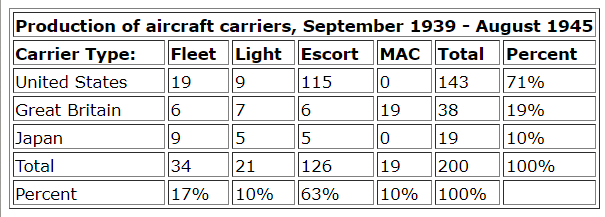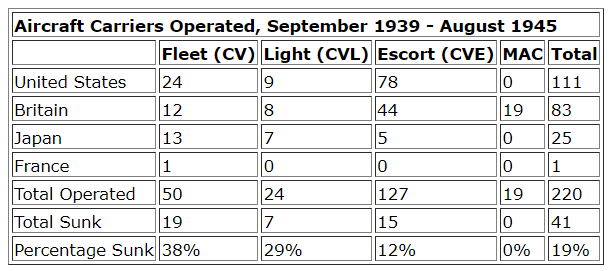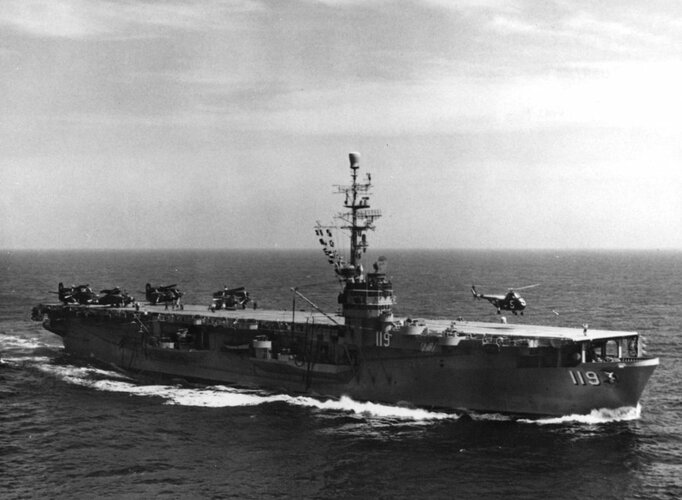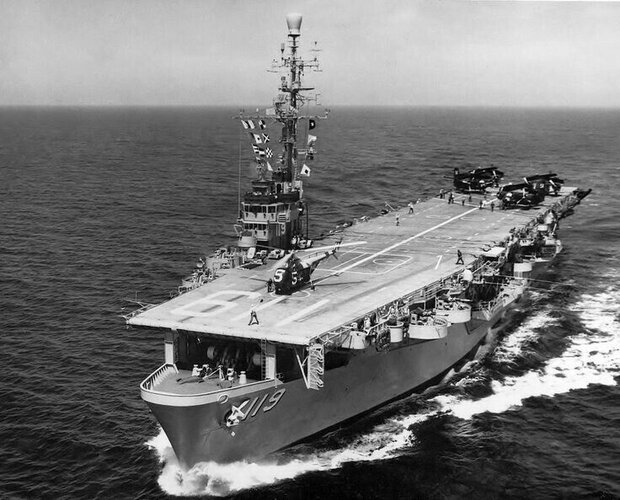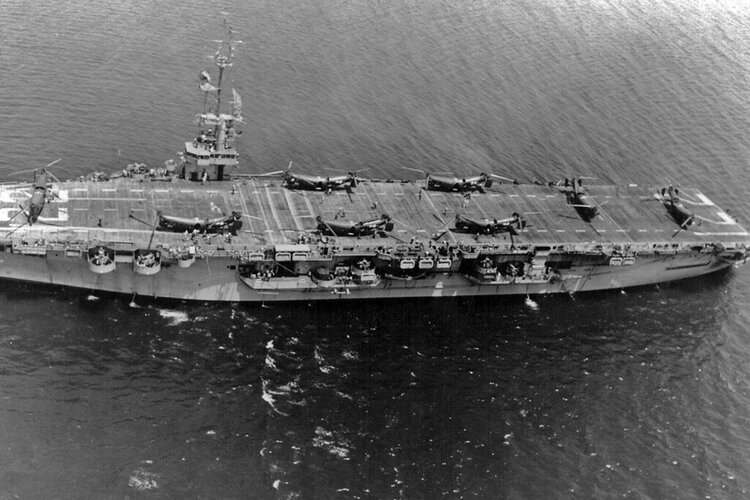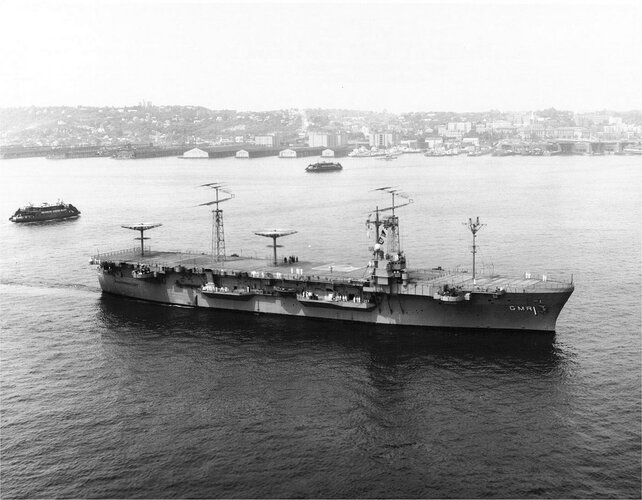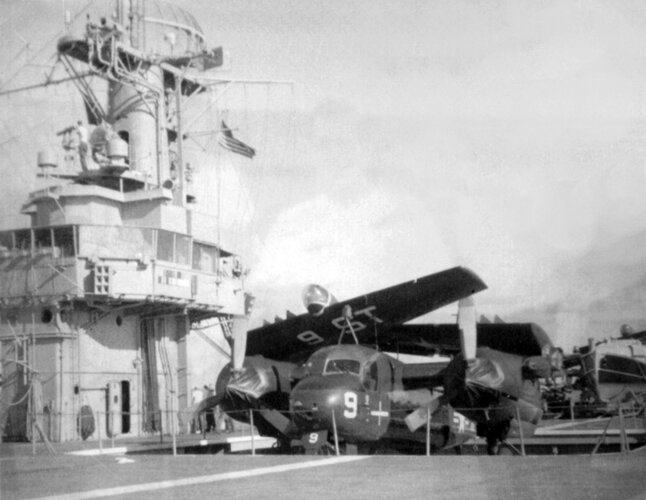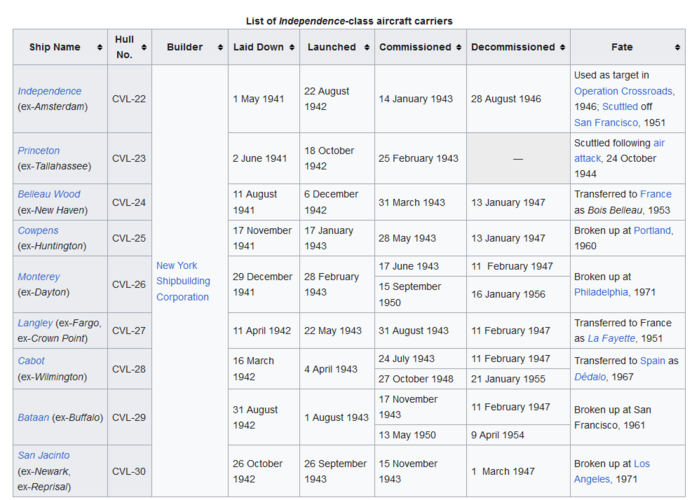- Joined
- 27 March 2006
- Messages
- 1,833
- Reaction score
- 1,493
Various threads on the usefulness various navies found in light fleet carriers such as the Colossus/Majestic Class (and even escort or cruiser conversion carriers) got me thinking..
The Commencement Bay class were the largest, most capable escort carriers.
These were based on the T3 tanker hull, but were purpose built from the keel up as carriers, instead of being conversions of the T3 hull, like the Sangamon class.
19 were built, and apart from some use as helicopter carriers in the 1950's, they saw little use as they were a little too small for jet aircraft.
They ended up being scrapped early (1960-1970) after being in reserve, with very little mileage on them.
However..whilst their utility to the US navy might have been questionable..what about other navies?
The Cimarron class tankers, the same T3 design, were jumboised from the early 1960's..
This added a new centre section, extending their length by 30 meters, out to over 200 meters.
This implies a waterline length longer than the Colossus class.
The conversions, from what I can gather, were achievable quite smoothly when one considers what was done.
Some of the new mid sections were even subcontracted out for construction to Kawasaki in Japan, and towed to the US for final fitment.
Some jumboised Cimarron class oilers lasted until the 90's/ 2000.
Would a jumboised Commencement Bay Class carrier have been a worthwhile exercise?
You would have to increase installed power naturally to bump up the speed up from the 20 knots, but this would probably have been quite feasible with the process involved in jumboisation.
Not sure about the cost, but if it was worthwhile jumboising the oilers, surely it was at least worth considering doing it to a 19 strong fleet of lightly used carriers?
You'd end up with a carrier slightly larger than the Colossus/Majestic..more hulls, and probably suitable for things like the Grumman Tracker, A-4 Skyhawk, F-11 Super Tiger, ASW helicopters...and useful for all the countries or Allies that did go for the light fleet carriers postwar.
The Commencement Bay class were the largest, most capable escort carriers.
These were based on the T3 tanker hull, but were purpose built from the keel up as carriers, instead of being conversions of the T3 hull, like the Sangamon class.
19 were built, and apart from some use as helicopter carriers in the 1950's, they saw little use as they were a little too small for jet aircraft.
They ended up being scrapped early (1960-1970) after being in reserve, with very little mileage on them.
However..whilst their utility to the US navy might have been questionable..what about other navies?
The Cimarron class tankers, the same T3 design, were jumboised from the early 1960's..
This added a new centre section, extending their length by 30 meters, out to over 200 meters.
This implies a waterline length longer than the Colossus class.
The conversions, from what I can gather, were achievable quite smoothly when one considers what was done.
Some of the new mid sections were even subcontracted out for construction to Kawasaki in Japan, and towed to the US for final fitment.
Some jumboised Cimarron class oilers lasted until the 90's/ 2000.
Would a jumboised Commencement Bay Class carrier have been a worthwhile exercise?
You would have to increase installed power naturally to bump up the speed up from the 20 knots, but this would probably have been quite feasible with the process involved in jumboisation.
Not sure about the cost, but if it was worthwhile jumboising the oilers, surely it was at least worth considering doing it to a 19 strong fleet of lightly used carriers?
You'd end up with a carrier slightly larger than the Colossus/Majestic..more hulls, and probably suitable for things like the Grumman Tracker, A-4 Skyhawk, F-11 Super Tiger, ASW helicopters...and useful for all the countries or Allies that did go for the light fleet carriers postwar.
Last edited:

